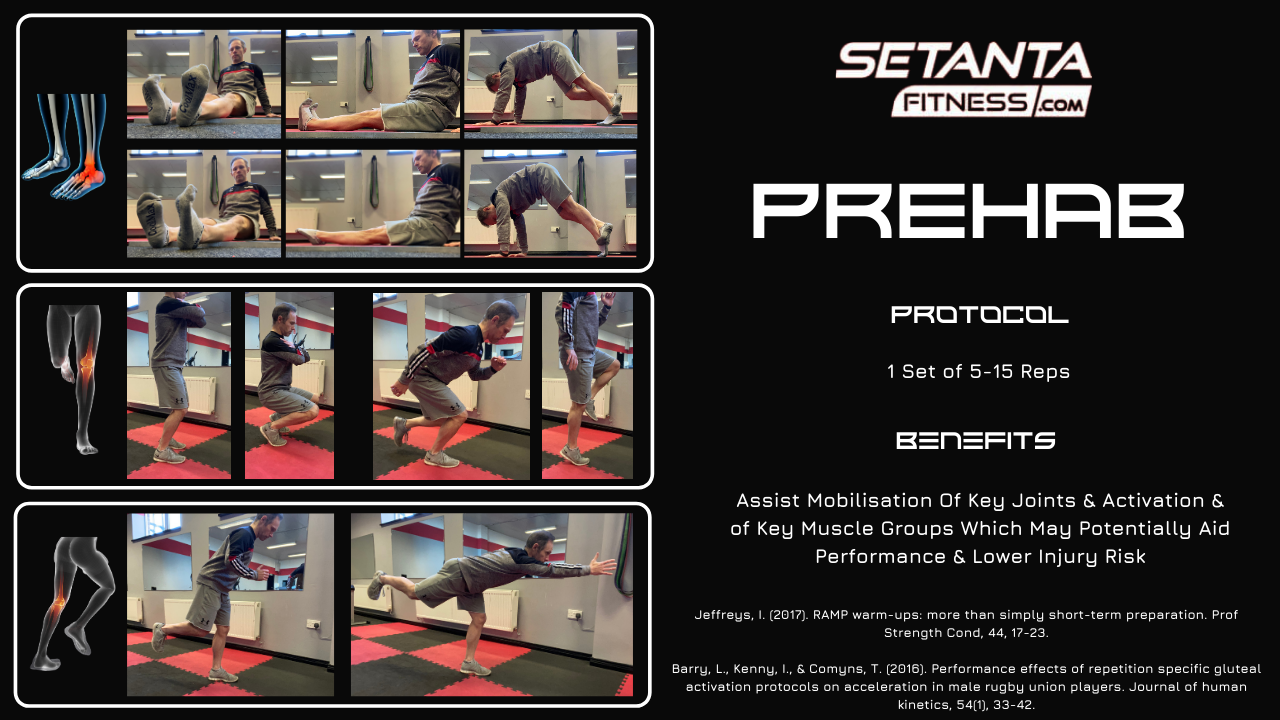THE EFFECTS OF CHANGE OF DIRECTION HIGH INTENSITY INTERMITTENT TRAINING ON GAELIC FOOTBALLERS RUNNING PERFORMANCE
BLUF
Similarly equated change of direction and linear high intensity intermittent training significantly improved repeat sprint ability, maximal aerobic power, change of direction ability and asymmetry qualities. Including change of direction only elicits between group differences in repeat sprint ability qualities.
ABSTRACT
This study investigated the effects of the inclusion of change of direction (COD) to a Nine-week linear high intensity intermittent training (L-HIIT) protocol. Twenty-six sub-elite Gaelic footballers (age 22.6 ± 3.8 years; stature 180.3 ± 4.5 cm; mass 82.0 ± 9.1 kg; body fat percentage 14.1 ± 5.1 %) performed a series of baseline tests including 10 m and 30 m sprints, 30:15 intermittent fitness test, 5-0-5 COD and repeat shuttle sprint ability. Participants were matched on individual intermittent fitness test velocity (VIFT) and randomly assigned to either L-HIIT group (n = 13; VIFT = 19.2 ± 1.1 km.hr-1) or a change of direction group (COD-HIIT) (n = 13; VIFT = 19.2 ± 0.95 km.hr-1). Both groups participated in a nine-week high intensity interval training (HIIT) running programme. The programme loads were identical apart from the inclusion of two 180-degree CODs in the COD-HIIT programme. Significant group x time interaction was found for repeat sprint ability (RSAmean) (p = 0.010), with COD-HIIT reporting greater improvements (7.52 ± 0.21 to 7.33 ± 0.18 s) than L-HIIT group (7.51 ± 0.20 to 7.42 ± 0.21 s). COD-HIIT group, reported greater effect size changes in RSAmean (COD-HIIT d = -0.999; L-HIIT d = -0.447), VIFT (COD-HIIT d = 1.758; L-HIIT d = 1.149), COD deficit (Dominant: COD-HIIT d = -0.535; L-HIIT: d = -0.524: Non-dominant: COD-HIIT d = -1.088; L-HIIT: d = -0.486) and asymmetry (COD-HIIT d = 0.902; L-HIIT d = 0.380). Findings suggest the inclusion of COD to HIIT elicits greater anaerobic and neuromuscular adaptations, providing strength and conditioning (S&C) coaches with potentially a more effective strategy to enhance team sport running performance qualities.
Abstract Summary Video
For anyone interested here is a link to a youtube video abstract summary of the study and research findings thanks to his supervisor on the project Stephen Patterson. https://youtu.be/tArLJM6acm0
Journal of Australian Strength and Conditioning
Here is a link to the research article in the Journal of Australian Strength & Conditioning where it was recently published. https://www.strengthandconditioning.org/…/3041-original…
Please feel free to contact Tom via tom@setantafitness.com if you’d like anymore information on the study.



